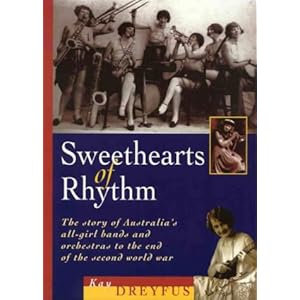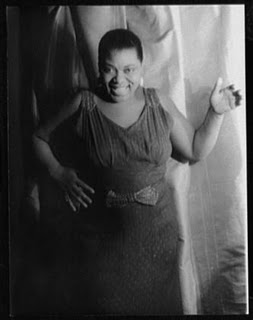I can’t be bothered doing a Women’s History Month for today.
I am so crap.
I can’t be bothered doing a Women’s History Month for today.
I am so crap.
There’s no trying to pretend that Nina Simone was a jazz era musician. She was born in 1933, and though she began playing piano at the age of six, she reached mainstream popularity in the 50s and 60s. Despite this historical distance from the ‘jazz era’, Simone’s playing and singing was clearly informed by classic jazz and blues as well as soul, rnb, gospel and modern jazz.
Simone was, first and foremost a gifted pianist, one who also sang.
Nina Simone – Love Me Or Leave Me
There’re a few bullshit pieces about Simone online, with stupid lines like ‘Simone had a chip on her shoulder’, as though her fury about racism in America was an overreaction by some silly emotional woman. Simone’s anger was well justified.
This is my favourite Simone song, which some white guy once tried to tell me wasn’t political. I can’t even.
(Nina Simone – Backlash Blues)
The lyrics were written by Langston Hughes:
Mr. Backlash, Mr. Backlash
Just who do think I am
You raise my taxes, freeze my wages
And send my son to VietnamYou give me second class houses
And second class schools
Do you think that alla colored folks
Are just second class fools
Mr. Backlash, I’m gonna leave you
With the backlash bluesWhen I try to find a job
To earn a little cash
All you got to offer
Is your mean old white backlash
But the world is big
Big and bright and round
And it’s full of folks like me
Who are black, yellow, beige and brown
Mr. Backlash, I’m gonna leave you
With the backlash bluesMr. Backlash, Mr. Backlash
Just what do you think I got to lose
I’m gonna leave you
With the backlash blues
You’re the one will have the blues
Not me, just wait and see
(Photo of Nina Simone, taken by Jack Robinson, 30th October 1969)
Another version of this really great, fun routine by a couple of arse kicking Canadian women.
BAM ALL UR JAZZ DANCE R BLEONG US!!11!
Eve Rees and her Merrymakers were an all-female dance band from Australia. They were very popular, touring extensively in rural and city Australia in the 1920s and to a lesser extent in the 1930s. Despite their popularity, it’s hard to discover much about them. A dodgy Trove search gives only three hits, and much of what I’ve found comes from books. I know! Today is World Book Day, so it’s appropriate It is not actually world book day, but that’s ok – we shouldn’t wait for WBD to read books :D . In fact, this image (of Eve Rees and her Merrymakers, including Grace Funston, Alice Dolphin, Marion de Saxe, Eve Rees (middle aged woman in centre), Stella Funston, Alma Quon, Gwen Mitchell and Lorna Quon) is taken from the book I’m about to discuss.
I totally forgot to do a post yesterday (yeah, yeah, whatever), so today is something special. A dear friend of mine, Corinne, gave me this book a few years ago:

(Sweethearts of Rhythm: the story of Australia’s all-girl bands and orchestras to the end of the second world war by Kay Dreyfus (Currency Press, Sydney, 1999))
It’s all about Australian all-women bands during the wars. The most famous of these sorts of bands is of course the American International Sweethearts of Rhythm. But there were actually heaps and heaps of these all-women bands in Australia and other countries. Mostly because so many men left for war there simply weren’t enough left behind to fill all the bands playing for the hundreds and hundreds of live music venues all over Australia. Remember, dancing was one of the most important popular entertainments during this period.

But all-women bands also served as titillation for male audience members, and initially as novelty acts for the broader community. Despite these issues, there is no doubting the competency of many of the all-women bands during the jazz and swing eras. After all, the mainstream jazz industry neglected 50% of the musicians on the basis of their sex, so 50% of that population were available for work when the labour pool shrunk.
Eve Rees and Merrymakers were one of the better known Australian all-women bands, managed by Rees, a capable and energetic business woman. Dreyfus quotes Alice Dolphin (who went on to lead her own bands):
The Merrymakers’ dance band at that time was extremely popular and I was invited to join them. The leader of the band was Mrs Evelyn Rees, a charming middle-aged woman who was well-liked everywhere we went. She was just ideal for the job.
What a tremendous amount of work we got! Every night, Mayoral balls, Country Women’s Association dances and balls (this of course meant travelling to country towns), Cafes, Lodges, Clubs, Weddings, Birthday parties, Jewish Greek and Chinese dances, Bar Mitzvahs, twenty first birthday parties and just parties, Military and Air Force dances and receptions of all kinds.
There’s more to be read about the Merrymakers in Dreyfus’ book, and I recommend picking it up.
References
You can read about the popularity of cinema and dancing in: Matthews, JJ, Dance Hall & Picture Palace : Sydney’s Romance with Modernity, (Sydney: Currency Press, 2005).
The Jeannie On Jazz blog proved useful in putting together this post.
Dreyfus has also written ‘The Foreigner, the Musicians’ Union, and the State in 1920s Australia: A Nexus of Conflict’ an interesting article about the role of the musicians’ union in the banning/boycotting of ‘foreign’ (ie non-British, ie non-white) musicians. This of course is relevant to recent talk about the Sonny Clay band and its role in provoking the ban on black musicians. And the Sonny Clay band was mentioned in the latest (third) episode of the Miss Fisher’s Murder Mysteries’ abc tv series set in the 1920s.
To whom it may concern,
As we all know, Ashfield’s main shopping strip down Liverpool Road favours the pedestrian, and parking a car is not for the faint of heart. I ride a bicycle and walk through Ashfield every day, grocery shopping and running errands.
When I ride my bike, I like to lock it up just outside the shop or business I’m patronising. It’s safest for my bike to be parked in a well-trafficked, highly visible public place. But it also needs to be somewhere it won’t impede pedestrians. It needs to be attached to a high, stable, secure structure that won’t damage it or break easily.
At the moment there is only one bike ‘loop’ in the little alcove near the Commonwealth bank atm, at the front of the Ashfield Mall. Bike loops look like this:

(source)
There is a bike ‘rack’ attached to the wall, but this rack is often full of bikes, and is – more importantly – not kind to my bike. Inserting the front wheel of a bike into the ‘slot’ is a good way to buckle your tire – the weight of your bike, knocked or pushed or falling to one side – will cause the tire (gripped by the rack) to bend. So I avoid this type of bike rack. This rack also requires either an exceptionally long bike lock, or a willingness to lock only your front tire to the rack. I like my entire bike to still be there when I return with my groceries, and my bike lock is, sadly, only of ordinary length.
We really need new bike racks in the Ashfield shopping area. The huge, barren, concrete wasteland in front of the new Council building would be an excellent place for a series of bike ‘loops’, or even – most excitingly! – some well-designed bike racks which could serve as public art as well practical tools for encouraging motorists off the road and onto their bikes. Luckily, the Powerhouse Museum has already conducted a competition for well-designed bike racks.
I am particularly fond of this one, and think it would be the perfect way to populate that space I mentioned:
(Chris Smith and Toby McInnes’ entry ‘Quale’; source)
I await your response to my suggestion with great anticipation,
Yours sincerely,
dogpossum,
Ashfield home owner and resident,
Cyclist.
[I’m experimenting with form and tone.]
I’m a big fan of hokum, mostly because I’m a big fan of clowning for its subversive power, and I love blues sung by arse kicking women. Susie Edwards (née Hawthorne) was one half of the husband and wife team ‘Butterbeans and Susie’, performing with her husband Jodie Edwards on stage, in vaudville, theatre and records. Riverwalk Jazz did a fun radio program about them a little while ago, and you can learn more about them there.
My favourite Butterbeans and Susie song is ‘Papa Ain’t no Santa Claus (and mama ain’t no christmas tree)’:
(Papa Ain’t No Santa Claus (Mama Ain’t No Christmas Tree))
The duo also recorded ‘He Like It Slow’ with Louis Armstrong’s Hot Five in 1926.
One of my absolute favourite singers, Carlisle has brilliant timing, really adding a good, solid swing to the small groups she worked with. Apparently Fats Waller ‘discovered’ her (well, I imagine Carlisle was a bit like America – there long before some man realised she existed), but the two share a nuanced musical sensitivity.
You can see her singing and playing the piano in this clip (sorry, I don’t know any more about this little film than this):
(I’m A Good Good Woman – Una Mae Carlisle)
This 1938 song Don’t Try Your Jive On Me is bit more fun.

Composer, musician, singer, EXTREME BADARSE PERFORMER. There are dramatic stories about Smith seeing off violent white men in her tent shows, about her numerous lovers of both sexes, and about her violent death. My favourite is the one about working with a young Louis Armstrong, where she demanded that he play a little less enthusiastically as he was cramping her style. I have no idea whether it’s true or not. But the influence of Smith’s performing style on instrumentalists like Armstrong should not be underestimated.
Another suggestion from a friend. Again, I’d never heard of Clora Bryant before she was recommended by the Buggzor (herself a brass instrumentalist of Repute). But now I have.
Clora Bryant was born in 1927 and is a trumpeter. She played with the International Sweethearts of Rhythm and you can listen to her play a bunch of nice songs in this video Clora Bryant /Gal With A Horn 1957:
(Photo at the top of this post taken by Loomis Dean in 1954, and lifted from the Life Magazine collection on google)
(image by Gjon Mili in 1943, New York, from the Google Life Magazine collection
Happy International Women’s Day! Today I’m doing Billie Holiday, even though she’s hardly an unknown, because she is my favourite.
Billie Holiday, singer, actress, performer.